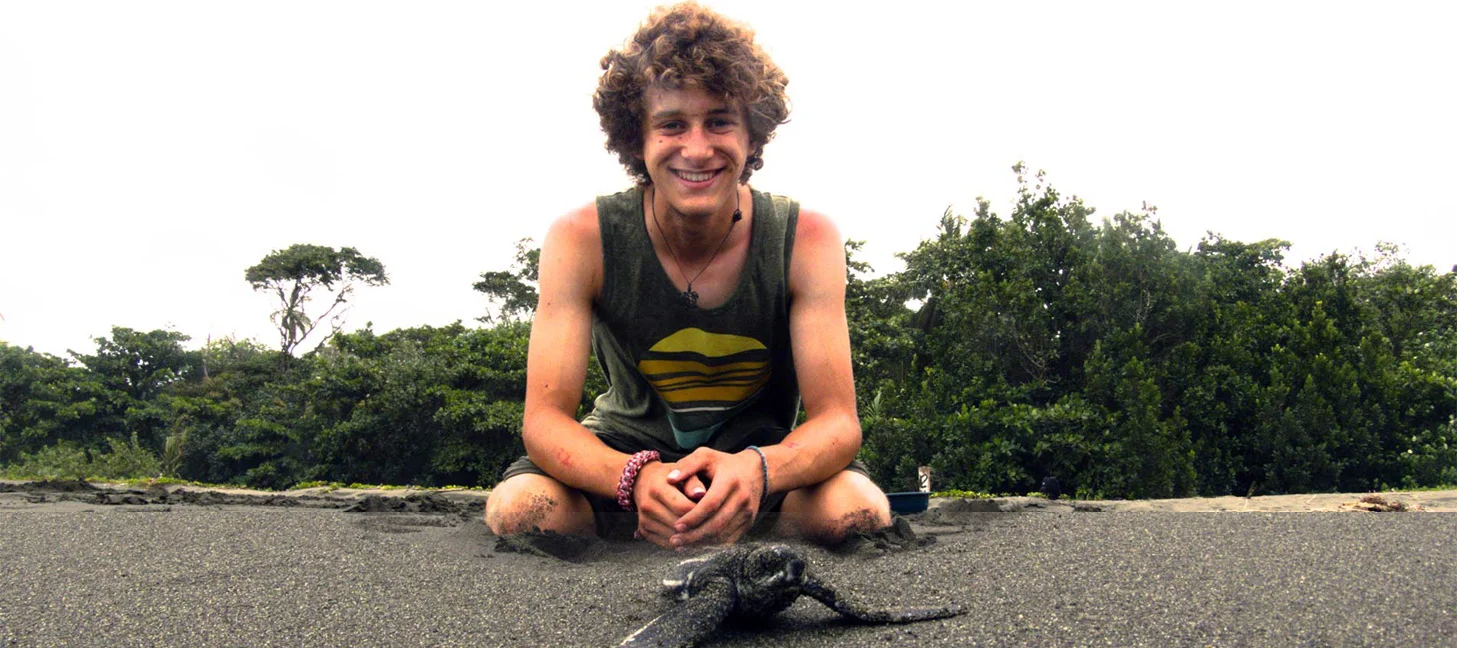I won’t lie to you, the first day on the boat was miserable.
While assisting Upwell’s researchers on hatchling tracking at Pacuare Nature Reserve, my role was to fill in for whatever needed to be done whenever it needed to be done. I know that sounds vague, but to me those orders were precise and executable with inscrutable vigilance. On land, I measured the hatchlings—tortuguitas—with callipers and a scale. I washed equipment. I ferried gear back and forth from the boat to clean up after a boat day, or to prepare for an impending one. I cooked breakfasts.
On the boat, I mostly took measurements of salinity, water temperature, wind readings, and the location of the turtle in relation to us. I would write down the measurements on our waterproof (read: splash-proof) paper. If there were enough people on the boat, two of us would split this job. When we all needed a break from our respective tasks, I would focus on training the hydrophone on the pinging of our turtle’s acoustic tag. Occasionally, only when we were in a pinch, I would do all three jobs at once.
In sun, these jobs are boring but easy. It’s nine hours of staring at the shore, staring out to sea, taking some measurements, and listening to the crappy 70’s music channel our boat drivers ostensibly enjoyed listening to.
But in rain, they become Herculean tasks. Most of the measurement tools were waterproof, but the ones that weren’t require special attention in the rain. The splash-proof paper we took on board is great if you happen to drip water from your recently soaked hat (it got seriously hot some days), but feels like tissue paper in a Costa Rican tropical storm. The solution is to hide under a tarp, which is more constricting and inconvenient than it sounds.
This all gets exponentially harder when everyone—left, right, and center—is puking their guts up over the sides of the boat. I rarely feel queasy on boats, and I’ve never been fully sea sick. But my nerves were tested on that first day.
And the rain was cold. Ice cold. I forgot my raincoat. That didn’t help matters.
The second day on the boat was significantly easier, warmer, but more tedious—“boring is good, Max, boring is good,” my boatmate, Noah, reminded me.
After the first day, I doubted my resolve, doubted that I could survive for the 2½ weeks I was going to spend at Pacuare. By day nine, I considered trying to stay for the full month.
In this day and age there is a certain assumption people make about scientists—that they’re prissy, soft, awkward. But that certainly doesn’t apply to field scientists. Field scientists sometimes live in extreme conditions, take data at insane locations, and for what? Why go to such lengths?
Curiosity. The answer is, indubitably, curiosity. Is that not what motivates us all, every day, every hour, every minute? Curiosity about what’s just around the corner, and the next, and the next…
Post by guest blogger Max Gotts

